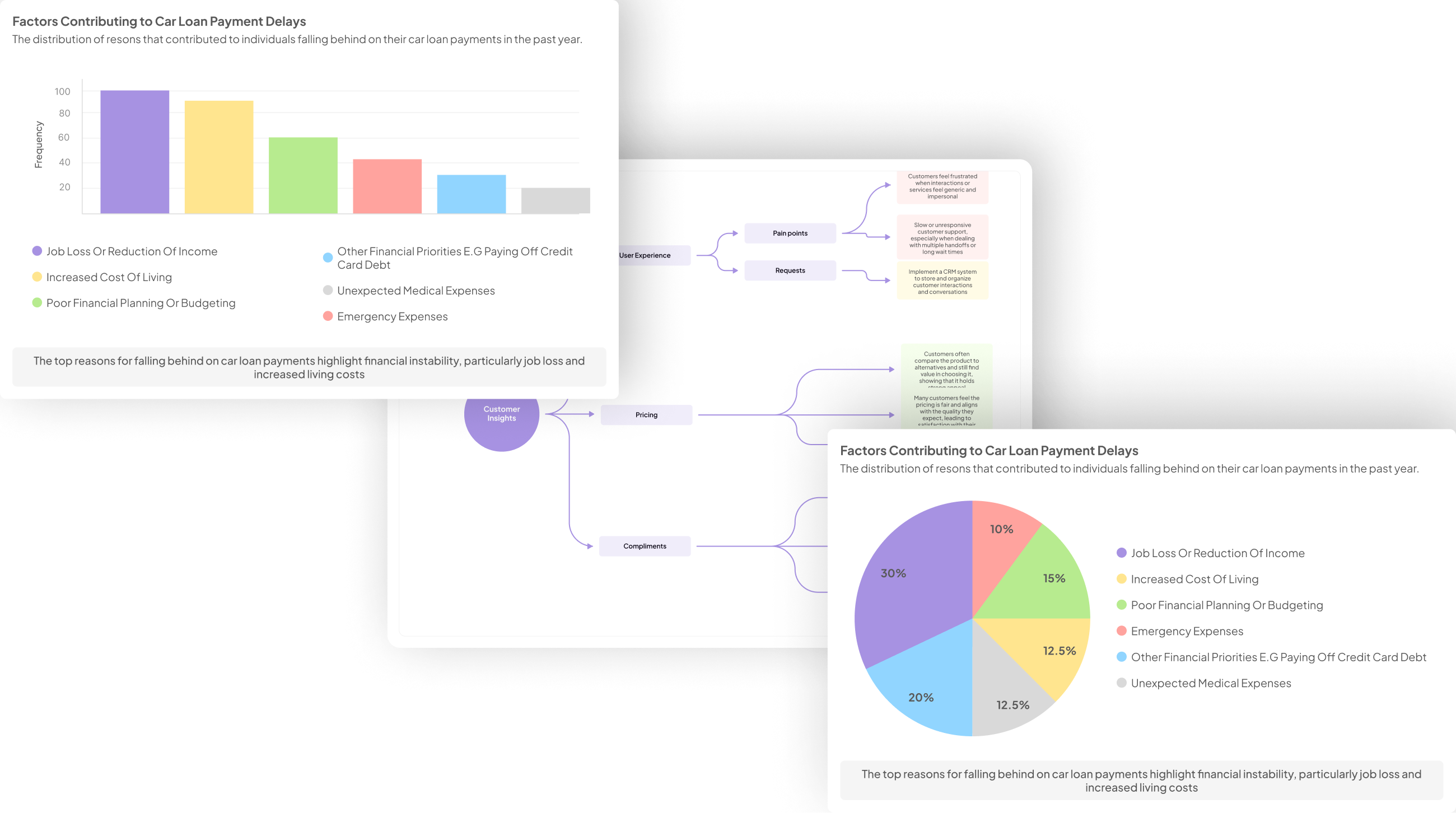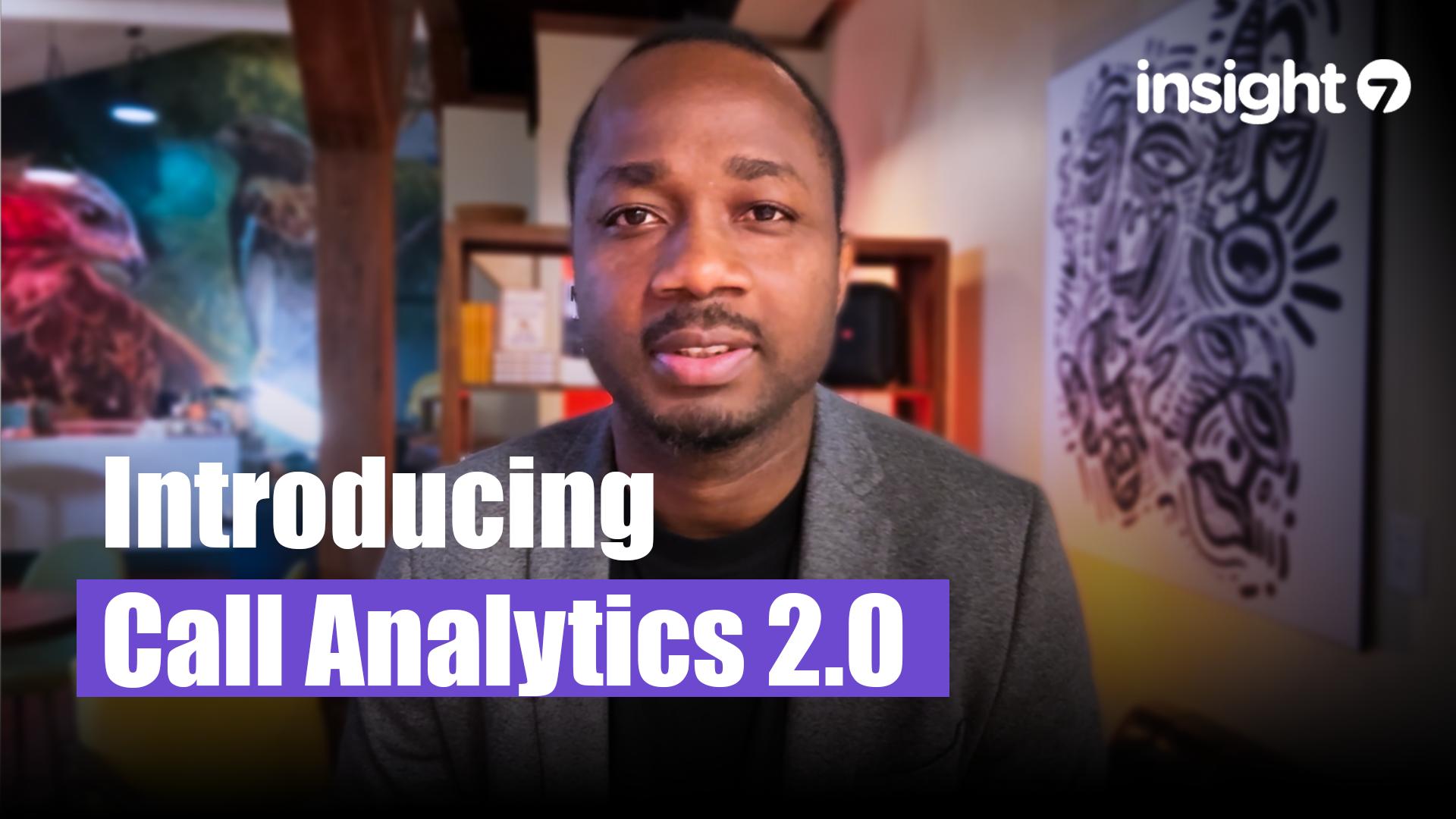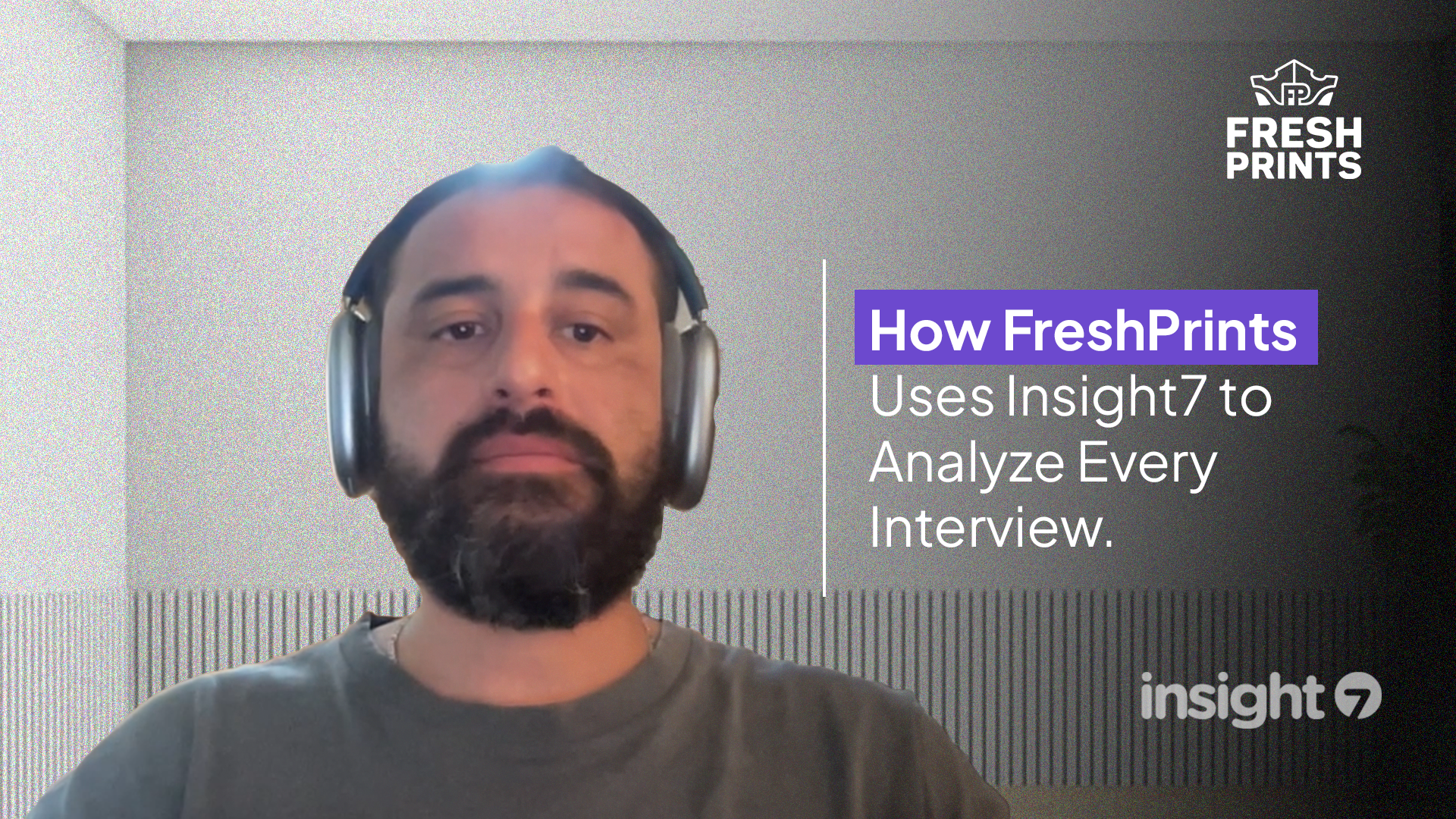How to extract insights from usability testing interviews
-
Bella Williams
- 10 min read
Usability Insights Extraction serves as a critical component of enhancing user experiences across digital platforms. When businesses conduct usability testing interviews, they create an opportunity to gather valuable feedback directly from users, pinpointing their pain points and preferences. This process not only sheds light on how users interact with products but also informs enhancements that can drive user satisfaction and loyalty.
To effectively carry out Usability Insights Extraction, one must approach the analysis systematically. By employing strategic methods and tools, stakeholders can sift through interview data to identify actionable insights. This aids in transforming subjective feedback into clear, evidence-based recommendations that can significantly improve product design and usability. Understanding and implementing these insights can ultimately lead to a more intuitive experience that resonates with users.
Generate visualizations from your qualitative data. At Scale.

In this section, introduce the importance of extracting insights from usability testing interviews and the impact these insights can have on enhancing user experience.
Usability insights extraction is a critical process that involves analyzing feedback from usability testing interviews. These insights reveal user experiences, uncovering pain points, preferences, and behaviors. By understanding these aspects, organizations can make informed decisions to improve product design and functionality. Essentially, these insights not only clarify user needs but also highlight opportunities for enhancement, which can significantly enhance overall user satisfaction.
The impact of actionable insights is profound. They enable teams to identify specific areas for improvement, ultimately driving innovation and fostering a user-centered approach to product development. When usability testing interviews are approached systematically, the insights garnered can lead to tangible results in user experience. As a result, businesses that prioritize extracting insights effectively can better meet user expectations and build stronger customer relationships. Engaging with users in this manner ensures that their voices are heard, significantly shaping the evolution of products and services.
Key Methods for Usability Insights Extraction
To extract usability insights effectively, several key methods can enhance the analysis of testing interviews. First, it is essential to employ structured frameworks, such as thematic analysis, which allows for categorizing responses based on recurring themes. This method helps in identifying patterns in user feedback, making it easier to draw meaningful conclusions. Another effective strategy is to utilize direct quotes from participants. Highlighting specific customer comments enriches the data, providing context and clarity to the insights gathered.
Additionally, visual representation of the data can significantly improve understanding. Using tools that create visual aids, such as charts or graphs, assists in portraying usability issues and user preferences clearly. Finally, synthesizing insights through collaborative discussions with team members can further refine understanding and prioritize issues effectively. By adopting these methods, organizations can significantly enhance their usability insights extraction process, leading to improved user experiences and more informed product decisions.
Discuss the strategies and methods that can be used to effectively extract insights from usability testing interviews.
To effectively extract insights from usability testing interviews, various strategies and methods should be employed. Firstly, establishing a clear objective for the interviews is crucial. This clarity allows facilitators to focus on specific user behaviors or experiences relevant to the product being tested. Secondly, developing a robust interview guide is essential. This guide should include both open-ended and targeted questions designed to elicit detailed user feedback and reveal underlying issues they may encounter during their interactions.
Another important method involves actively listening during the interviews. Practitioners must be attentive and responsive to the interviewee's thoughts, allowing for follow-up questions that can dig deeper into specific insights. Additionally, utilizing recording tools can be beneficial, as they enable thorough analysis later on. Transcribing and categorizing the data afterwards aids in identifying common patterns and insights across multiple interviews. Implementing these strategies will significantly enhance usability insights extraction, leading to more informed product improvements.
Preparing for Successful Insights Extraction
When preparing for successful insights extraction from usability testing interviews, establishing a solid foundation is essential. This includes defining clear objectives for your interviews, as this will guide the entire process and ensure focused discussions. Identifying the right participants is also crucial, as their experiences will significantly impact the quality of insights generated.
Another key step is designing a versatile interview guide. This guide should include open-ended questions that encourage participants to share their experiences in depth. Additionally, creating a comfortable environment fosters open communication, promoting honest feedback. Prior to the interviews, familiarize yourself with the software or tools you will use to record and analyze the conversations. This technical readiness will streamline the process and help you focus on gathering valuable usability insights.
Ultimately, a well-prepared setup will pave the way for effective analysis and meaningful conclusions. By following these steps, you may ensure that insights extraction becomes a productive and enlightening process.
Outline the steps involved in preparing for usability testing interviews, emphasizing the setup required to facilitate insightful analysis.
Preparing for usability testing interviews is crucial for extracting meaningful insights. Start by defining clear goals for your research. Understanding what you want to achieve will guide your questions and the overall structure of the interview. Next, consider participant recruitment carefully; ensure that your sample represents the target user demographic accurately. Engaging users who closely align with your intended audience will yield more relevant insights.
Additionally, setting up the interview environment is vital for fostering open communication. A quiet, comfortable space encourages participants to share their thoughts freely. Choose appropriate tools for recording and analyzing the interviews to facilitate efficient data extraction later. This thoughtful preparation and setup play a pivotal role in ensuring that you gather valuable usability insights that can drive meaningful improvements in user experience.
By following these steps, you enhance the odds of uncovering actionable insights during the analysis phase of usability interviews.
Conducting Effective Usability Interviews
To conduct effective usability interviews, it is essential to establish a responsive and open environment. Begin by creating a comfortable space where participants feel at ease to share their thoughts and experiences freely. This openness fosters authentic feedback, providing deeper usability insights. Always start the session with clear objectives in mind, allowing you to guide the conversation towards your specific goals without stifling the participant’s input.
In addition, utilizing effective questioning techniques is crucial for drawing out detailed insights. Open-ended questions encourage participants to elaborate on their thoughts, while prompts can help clarify if their feedback is vague. Another key aspect is to actively listen and observe; a participant's non-verbal cues can reveal nuances that words alone may miss. This tailored approach maximizes the potential for extracting valuable insights that can drive improvements in user experience and product design.
Detail ways to conduct usability testing interviews that are tailored to maximize the extraction of useful insights.
To ensure effective usability testing interviews, preparation is key. Start by defining clear objectives for your interviews. Clearly outline what questions you need answered to guide the interview process. This objective-driven approach helps focus the discussion and aligns it with your goals for usability insights extraction. Creating a comfortable environment is equally important; a relaxed participant is more likely to express candid thoughts and experiences.
During the interview, employ open-ended questions to encourage detailed responses. Prompting participants with scenarios pertinent to your product can reveal hidden challenges and usability issues. Actively listen and be flexible enough to delve deeper into unexpected topics that arise. Finally, consider recording sessions, with participant consent, for accurate capture of insights that can be revisited later. By incorporating these strategies, you can maximize the value of your usability testing interviews.
Evaluate Performance on Customer Calls for Quality Assurance.
Tools for Enhancing Usability Insights Collection
Usability insights extraction can significantly enhance your understanding of user experiences and product performance. To achieve this, leveraging the right tools plays a crucial role in organizing, analyzing, and interpreting qualitative data collected during usability testing interviews. Various software solutions simplify the collection process, making it accessible and efficient for anyone involved in the research.
Several tools offer unique capabilities that facilitate the extraction of meaningful insights. First, Insight7 provides an intuitive interface for visualizing conversations and extracting key themes from each user interview. Next, Dovetail excels in structuring qualitative data, allowing users to identify trends and pain points. Finally, Optimal Workshop streamlines usability tests by providing an array of innovative tools designed to gather user feedback effectively. Each of these tools empowers teams to turn raw data into actionable insights, thus improving overall design and user satisfaction.
Provide a list of tools that help in organizing and analyzing data from usability interviews, giving prominence to Insight7.
When it comes to organizing and analyzing data from usability interviews, several tools can significantly streamline the process. Among these, Insight7 stands out for its user-friendly interface and comprehensive capabilities. This platform allows teams to efficiently analyze interview data, transforming complex feedback into actionable insights. With its intuitive features, Insight7 makes it easy to visualize customer conversations, which is key for identifying trends and patterns. Timely access to these insights enables companies to stay ahead of competitors by adapting to user needs swiftly.
In addition to Insight7, tools like Dovetail offer robust qualitative data organization capabilities, allowing teams to categorize and analyze feedback effectively. Similarly, Optimal Workshop provides a suite of usability testing tools that enhance insights extraction, making it easier to pinpoint user pain points and preferences. These tools not only save time but also ensure that insights from usability interviews are systematically documented, fostering an environment of continuous improvement and user-centered design.
Insight7
To effectively extract usability insights, it is crucial to establish an engaging environment that encourages open dialogue during testing interviews. The usability insights extraction process begins long before the interviews, requiring meticulous preparation to ensure participants feel comfortable sharing their thoughts. Begin by developing clear objectives and forming relevant questions that guide the conversation towards achieving those objectives. This preparation sets the stage for meaningful discussions that yield valuable insights.
During the interviews, emphasize active listening. This practice allows facilitators to pick up on nuances and important signals that may not be articulated explicitly. Utilize open-ended questions to encourage participants to express their thoughts freely. After conducting interviews, analyze the data collaboratively, focusing on common themes and unexpected patterns. By systematically organizing this information, you can identify actionable insights that directly inform product improvements and better user experiences, ultimately leading to greater customer satisfaction.
Explain how Insight7 aids in extracting comprehensive usability insights through its features.
Insight7 enhances usability insights extraction by providing user-friendly features that allow anyone in the organization to engage with the insights seamlessly. Users can easily upload various types of content, from usability testing interviews to customer feedback calls, into the platform. Once uploaded, these recordings undergo transcription, enabling users to visualize conversations along with key insights. This democratization of data ensures that insights are accessible, fostering a culture of informed decision-making.
Moreover, the platform employs advanced analytics to identify common pain points, desires, and behaviors by generating actionable insight cards. These cards include direct quotes and evidence from customers, which substantiate the findings. Users can query the dataset to summarize and extract key themes from multiple interviews at once, streamlining the analysis process. With these robust features, Insight7 not only simplifies usability insights extraction but also amplifies the user experience, allowing teams to focus on creating impactful solutions.
Dovetail
Dovetail streamlines the process of organizing qualitative data gleaned from usability testing interviews. By providing a user-friendly platform, it enables teams to easily categorize and analyze the information obtained during these sessions. This organization is crucial for transforming raw data into actionable insights that can significantly enhance user experience.
To effectively utilize Dovetail, follow these key practices:
- Data Segmentation: Break down interviews into manageable segments for a thorough analysis.
- Tagging and Clustering: Use tags to group similar responses, helping identify common themes.
- Visual Analysis: Utilize Dovetail’s visual tools to map out insights and trends for better comprehension.
- Collaboration Features: Encourage team members to comment and share insights directly within the platform.
By emphasizing these approaches, Dovetail facilitates usability insights extraction that empowers teams to make data-driven decisions. This streamlined process leads to improved products shaped by thorough user feedback, ultimately creating more engaging and effective user experiences.
Discuss the capabilities of Dovetail in organizing qualitative data for better insights.
Dovetail offers powerful capabilities for organizing qualitative data, making usability insights extraction more effective. As projects involve extensive interviews, its platform facilitates the easy categorization and visualization of data. Users can categorize feedback into positive and negative themes, making it straightforward to understand user sentiment and pain points. This structured approach ensures that critical insights are not overlooked and inspires actionable recommendations.
Additionally, advanced querying features enable comparisons across datasets, giving users the ability to spot trends over time or between different locations. By comparing feedback from varied groups, teams can refine their strategies or product features. The platform's intuitive design simplifies analyzing large volumes of data, ensuring that meaningful insights emerge efficiently and accurately. Overall, Dovetail empowers organizations to derive maximum value from user feedback, ultimately enhancing decision-making and user satisfaction.
Optimal Workshop
Optimal Workshop empowers teams to extract valuable usability insights through its diverse suite of testing tools. This platform is designed with user-friendliness in mind, allowing anyone in the organization to gather data without requiring extensive training. By providing features that simplify the process of organizing usability interviews, it democratizes access to critical insights.
Users can upload and analyze recordings within the platform to identify pain points, desires, and behaviors directly from customer conversations. The intuitive interface enables seamless navigation, allowing teams to focus on extracting key themes and actionable insights from usability testing interviews. Furthermore, Optimal Workshop enhances collaboration among team members, turning observed data into significant contributions for design and development decisions. Ultimately, by integrating Optimal Workshop into the insights extraction process, organizations can derive deeper understandings of user needs, leading to improved overall user experiences.
Highlight how Optimal Workshop assists in usability insights extraction through its suite of testing tools.
Optimal Workshop offers a robust suite of testing tools designed to streamline the process of usability insights extraction. By simplifying the workflow, it allows teams—regardless of expertise—to gather meaningful data from usability testing interviews. Users can effortlessly document and analyze calls, turning raw transcripts into actionable insights. This often begins with identifying key pain points, desires, and behaviors expressed by participants during interviews. Such immediate access to the voice of the customer is invaluable in driving improvements.
The platform’s intuitive interface displays insights through visually appealing cards, enabling users to easily discern themes and trends from extensive datasets. Additionally, summary features provide quick overviews, allowing stakeholders to dive deeper into specific conversations effortlessly. By consolidating multiple interviews within projects, Optimal Workshop enables the analysis of hundreds of calls concurrently. This comprehensive capability ensures that usability insights extraction is both efficient and effective, ultimately leading to enhanced user experiences.
Conclusion: Maximizing Usability Insights Extraction Benefits
To maximize the benefits of usability insights extraction, it is essential to recognize the profound impact these insights can have on product design and user experience. When collected effectively, they not only reveal patterns of user behavior but also illuminate pain points that need addressing. This strategic analysis leads to informed decisions, ultimately improving overall satisfaction and engagement.
Leveraging tools designed for usability insights extraction can streamline the process, making it accessible to a broader audience within an organization. By promoting collaboration and democratizing data access, teams can derive valuable insights that enhance user-centric design. Therefore, committing to a meticulous approach to usability testing ensures that insights are not only gathered but also utilized to elevate the user experience significantly.
Summarize the importance of extracting insights from usability testing interviews and how these insights transform user experiences and product design.
Extracting insights from usability testing interviews is crucial for enhancing overall user experience and driving impactful product design. By gathering qualitative data directly from users, businesses gain valuable perspectives that reveal pain points and preferences. This understanding allows design teams to pinpoint areas for improvement and optimize features that resonate with their audience.
The process of Usability Insights Extraction not only informs product decisions but also fosters user alignment throughout development. When design changes are rooted in real user feedback, it significantly increases user satisfaction and engagement. Ultimately, leveraging these insights helps transform a product to meet user needs better, making the final experience seamless and enjoyable. In this way, usability testing acts as a catalyst for meaningful design evolution.







